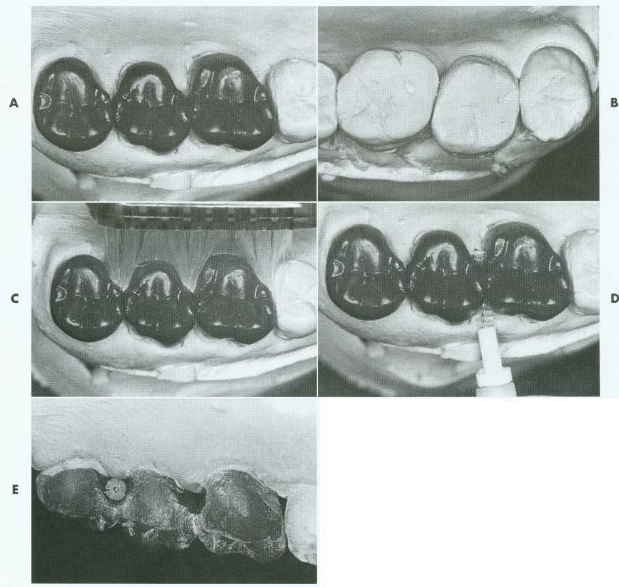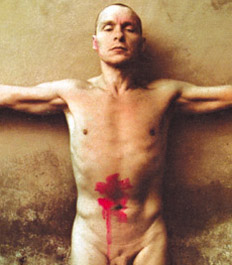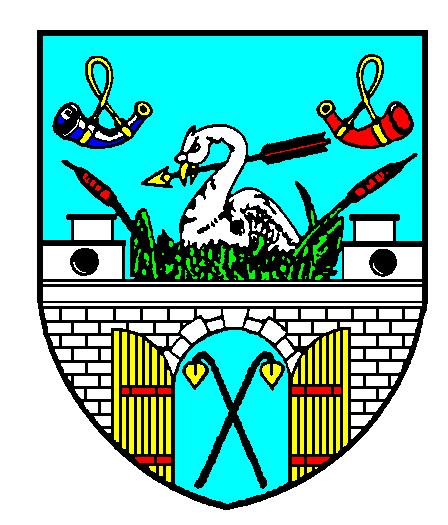LECTURE EIGHTCROWN AND BRIDGE داحمد غانم INTER OCCLUSAL RECORD
111 DERIVING DYNAMIC PROGRAMMING ADVANCED MATH THIS LECTURE REALLY13 ALLAN MACRAE JEREMIAH LECTURE 2 © 2013 DR
13 FRIDAY ALL NIGHT SERVICE TITLE LECTURE ON GENESIS
2 ECON4925 LECTURE PLAN LECTURE PLAN ECON4925 2006 (REV1)
2 LECTURE USE OF COHERENCE OF LASER LIGHT PHOTON
20 ALL OF LIFE IS A PROJECTION LECTURE BY
Lecture eight-----------------------------------------------------------------------------crown and bridge
د.احمد غانم
Inter occlusal record ((bite registration)):-
It is a technique done to transform the relation between the upper & lower dental arch from the patient mouth to the articulator. Proper inter occlusal record is important to orient the die or dies of the prepared & unprepared teeth in the same arch to the opposing arch.
If enough teeth are present in both upper & lower arch we can transfer the relation by the hand articulation of the cast, no bite record is needed in such case, so we can occlude the opposing cast by the hand, then we amount them on the articulator, however, if the remaining teeth are insufficient to produce hand articulation of the cast we have the fallowing technique to record the bite:-
1. Pink base plate.
2. Bite registration past.
3. Bite rim or occlusal rim.
How to record?
Whatever the material used to record the relation you have to guide the mandible to required relation ( centric & eccentric ) , as in a prosthetic , so ask the patient to close & guide him , put reference point , then put the record material & register relation .The most widely used material to record the occlussal relation is pink base plate wax.
The procedure is done by softening the wax at first , then apply the soften wax over the occlussal surface of the prepared teeth, then ask the patient to bite on it keeping in your mind that you have to guide your patient to the reference point that you mark it to have the correct registration . The patient is asked to mold the wax at lingual area by his tongue while by your finger adapt the wax on the labial, then after complete setting remove it from the patient mouth, trim the excess & attach it to the cast & transfer it to the articulator.
Bit rim is used if we have free end saddle & we restore the anterior teeth or we do it when we have enough teeth to obtain the centric relation (the same as that used for removable partial denture).
Waxing
Ditching: - is the trimming of excess stone gingivelly to the margin of the preparation. So that making the margin clear, it is done by using sharp hand instrument.
Lost wax technique
The process consist of surrounding the wax pattern with mold of heat resistance investment material , eliminating the wax by the heating , and introducing molten metal in to the mold cavity through channel called ( sprue).
Wax pattern: procedure of the final cast restoration were the wax placed on the prepared tooth, it should be clear, smooth, should be duplicate accurately the final anatomical feature of the original tooth & should be free from any debris.
The information needed to duplicate the anatomical feature is taken from the adjacent teeth, the opposing teeth &from the general knowledge of the dental anatomy.
Wax is used to construct the wax pattern because:
I) It is easy to manipulated.
II) Inexpensive (cheep).
III) Easily to eliminate it from the mold cavity during the burn out procedure.
The type of the wax used in the construction of the wax pattern is inlay casting wax.
According to the ADA we have two types of the inlay casting wax:-
1) Type one I inlay casting wax:-
It is used for the intraoral waxing technique, it has higher melting temperature
2) Type II inlays casting wax:-
It is used for the exetraoral waxing technique and has lower melting temperature; it is used to construct the wax pattern on the cast.
Requirements of good inlay casting wax:-
1. It must flow readily when heated without chipping.
2. It must rigid when cooled.
3. It must be capable of carving without chipping or smearing over when it is done over the fine margin.
Techniques of construction of wax pattern (w. p):-
1. Intra oral technique (direct technique).
In which the w.p. is constructed inside the patient mouth using type I inlay wax, mostly we use this technique in construction of the posterior inlay restoration & anterior post-crown.
2. Extra oral technique (indirect technique).
Here we use type II inlay wax to construct the w. p. on the die of the die of the working cast.
The advantage of the indirect over the direct tech.:-
1. It reduces the chair time so it saves the dentist time & more comfortable to the patient.
2. It offer opportunity for the visualization of the restoration & readily (direct) access to waxing the margin.
3. It is probably the easiest mean of fabricating cast restoration.
Steps in waxing procedure:
1. Cover all the preparation in one time with molten wax to make a coping of wax this can be obtained by immersing the preparation in the dish contain molten wax , so now obtain the 1st layer of the wax pattern .
2. Add wax to the proximal surface (wall) of the restoration in relation to the adjacent teeth (to build the contact area in relation to the adjacent teeth).
3. Build the axial wall (buccal & lingual) to the normal counter.
4. Build the occlussal surface of the restoration following ( in relation ) curve of spee & curve of Wilson , then check & adjust the occlussal relation with opposing teeth in centric & eccentric relation
5. Check again all the margins of the restoration (w.p) to ensure that the margin of the (w. p) have no over or under extension, so the wax pattern is now ready for the next step.

2002 FRESHFIELDS LECTURE 19 ARB INT’L 279 (2003) ARBITRATION’S
3 TEST QUESTIONS – BIT LECTURE 1 OBJECTIVES AND
3012 FUNDAMENTALS OF MATERIALS SCIENCE FALL 2003 LECTURE 10
Tags: bridge د.احمد, eightcrown, occlusal, inter, record, bridge, داحمد, lecture
- TEMA BIOSFERA CURSO 1415 JULIO OPCIÓN A 1 LOS
- CAR USER FORM FOR COMPLETION BY EMPLOYEE RECTANGLE 14
- JERARQUIZACIÓN DE MODIFICADORES DENTRO DE UNA FRASE DENTRO DE
- CONFERENCIA INTERNACIONAL LA EDUCACIÓN INCLUSIVA VIA PARA FAVORECER LA
- LES ACTIVITÉS DE CONTRÔLE DE LA QUALITÉ CHEZ AL
- FORMULÄR WGS 6 WENNERGREN STIFTELSERNA INGES (5 EX) TILL
- 07032016 PROGRAMA OPERATIVO FONDO SOCIAL EUROPEO 2014 2020
- GOBIERNO DE NAVARRA Y GAS NATURAL SUSCRIBEN UN ACUERDO
- IZJAVA SPODAJ PODPISANAI IZJAVLJAM DA DOVOLJUJEM OBJAVO SVOJIH
- INFORME CONSOLIDADO DE AUDITORÍA GUBERNAMENTAL CON ENFOQUE INTEGRAL MODALIDAD
- STAFF STATEMENT OF THE INSTITUTION CODE NAME OF
- PURDUE UNIVERSITY RESEARCH GUIDELINES FOR COMPLIANCE WITH HIPAA PRIVACY
- NAME 421 N WOODLAND BOULEVARD UNIT 00000 DELAND FL
- TAKSA NA PRETOVOR PODROBNEJŠI OPIS 1 IZDAJA MAREC 2019
- COMUNE DI BORE PROVINCIA DI PARMA DELIBERAZIONE DI CONSIGLIO
- PSYCHOLOGY AND CLINICAL LANGUAGE SCIENCES UNIVERSITY OF READING
- NZQA UNIT STANDARD 27360 VERSION 3 PAGE 4 OF
- HỆ THỐNG CƠ SỞ ĐOÀN TRỰC THUỘC ĐOÀN TNCS
- 3 VÅRFRUDAG VÅFFLOR DEN 25 MARS ÄR
- OJO NO ES GRATIS EXISTE UNA VERSIÓN GRATUITA BÁSICA
- STUDIEOVEREENKOMST ONDERGETEKENDEN WERKGEVER BEDRIJF NAAM ADRES
- OBRAZEC ŠT 4 KONČNO POROČILO O IZVEDBI PROJEKTA V
- FORMULARZ ZGŁASZANIA PROBLEMÓW W SL2014 WZÓR (WERSJA 10)
- FORMULAR CES6 FIȘA DE EVALUARE GENERALĂ A PROIECTULUI
- EVOLUÇÃO TECTÔNICA PARA O DOMÍNIO OESTE E SUDOESTE DO
- COLORANTS CLASSES CONCERNÉES 2NDE ET TSSPÉ INTRODUCTION
- THIS DIRECTORY HAS BEEN COMPILED BY A VOLUNTEER WHO
- ADIYAMAN ÜNİVERSİTESİ MEDİKO SOSYAL BİNASI BAY KUAFÖR SALONU KİRA
- ALLEGATO MODD MODULO PER L’ESERCIZIO DEL DIRITTO DI SCEGLIERE
- EVENTOS TEMÁTICOS FIESTA AFRICANA FIESTA MEXICANA TEORIA DE LOS
CONTRATO DE APRENDIZAJE ITINERARIO FORMATIVO “CREANDO AMBIENTES MÁS SALUDABLES
CIRCULAR 4016 ANSES (DP) MOVILIDAD PARA JUBILADOS Y
 Strona 18 z 18 (podmiot Umowy)
Strona 18 z 18 (podmiot Umowy) MEETING MINUTES MEETING WOLDS VIEW PATIENT GROUP TIME 1900
 APÉNDICE I VALORACIÓN DE RENTAS APÉNDICE II VALORACIÓN FINANCIERA
APÉNDICE I VALORACIÓN DE RENTAS APÉNDICE II VALORACIÓN FINANCIERACOURSE NAME SEMESTER SYLLABUS ACCESSIBLE COURSE SYLLABUS TEMPLATE
 EL CUERPO UTÓPICO EN ESTA CONFERENCIA DE FOUCAULT
EL CUERPO UTÓPICO EN ESTA CONFERENCIA DE FOUCAULT M ĚSTO CHRASTAVA NÁMĚSTÍ 1 MÁJE 1 463 31
M ĚSTO CHRASTAVA NÁMĚSTÍ 1 MÁJE 1 463 31ZASADY OCENIANIA Z MUZYKI 1OCENIE PODLEGAJĄ A WIADOMOŚCI I
4 RDAGJ8042005 CONTRALORIA GENERAL DE LA REPUBLICA DIVISIÓN
TEXTO OFICIAL DE LA CARTA DE INVITACIÓN DE LA
REZERVELE LA TRATATE REZERVELE LA TRATATE AUTOR MIHAI BÂRSAN
28971 THE EVOLUTION OF DEVELOPMENT THINKING THEORY AND POLICY
HISTORIAL MÉDICO DEL PACIENTE HEALTH MOBILE MÉDICO TELÉFONO
ERZİNCAN BİNALİ YILDIRIM ÜNİVERSİTESİ ULUSLARARASI İLİŞKİLER KOORDİNATÖRLÜĞÜ ÖĞRENİM ANLAŞMASINDA
NACRT NA TEMELJU ČLANKA 33 STAVKA 4 ZAKONA O
 ETSICCP Y BIBLIOTECA EXT 71570 ELISEO VILLANUEVA ROMERO
ETSICCP Y BIBLIOTECA EXT 71570 ELISEO VILLANUEVA ROMERO REGULAMIN RADY RODZICÓW SZKOŁY PODSTAWOWEJ NR 15 IM GEN
VERSION 4 A TURN TO THE ITALIAN EMLYN NGAI
3 AKTUALIZACE PLÁNU ROZVOJE VODOVODŮ A KANALIZACÍ MORAVSKOSLEZSKÉHO KRAJE